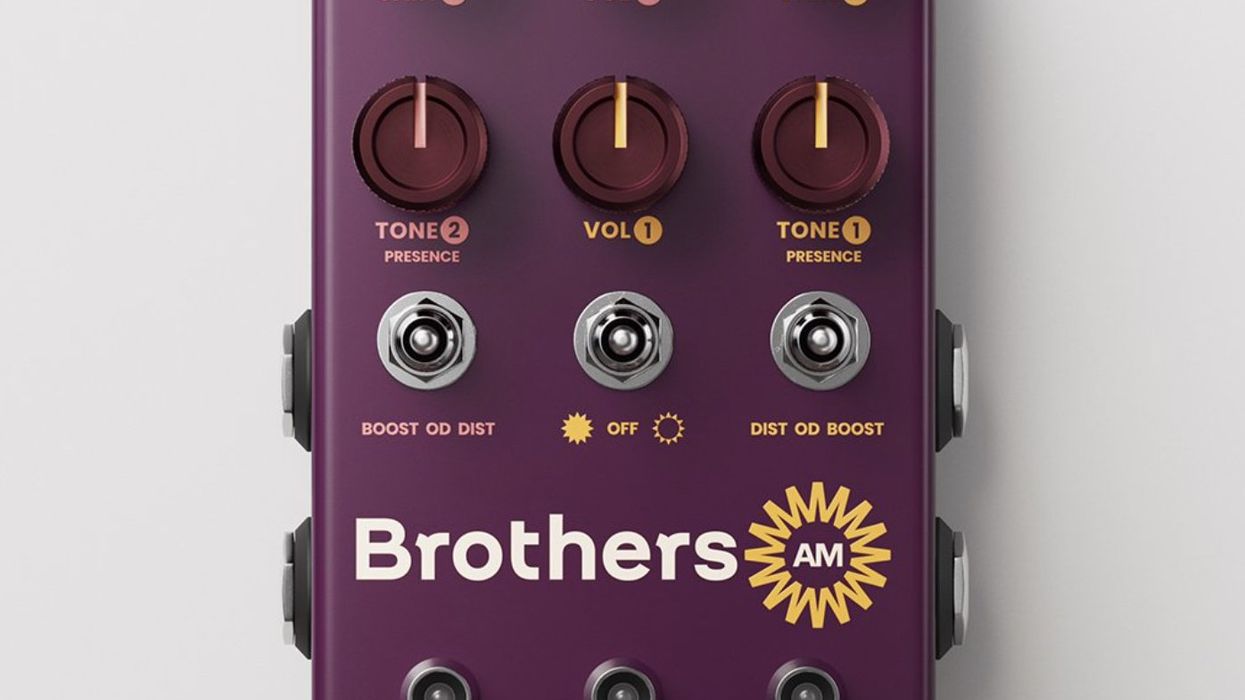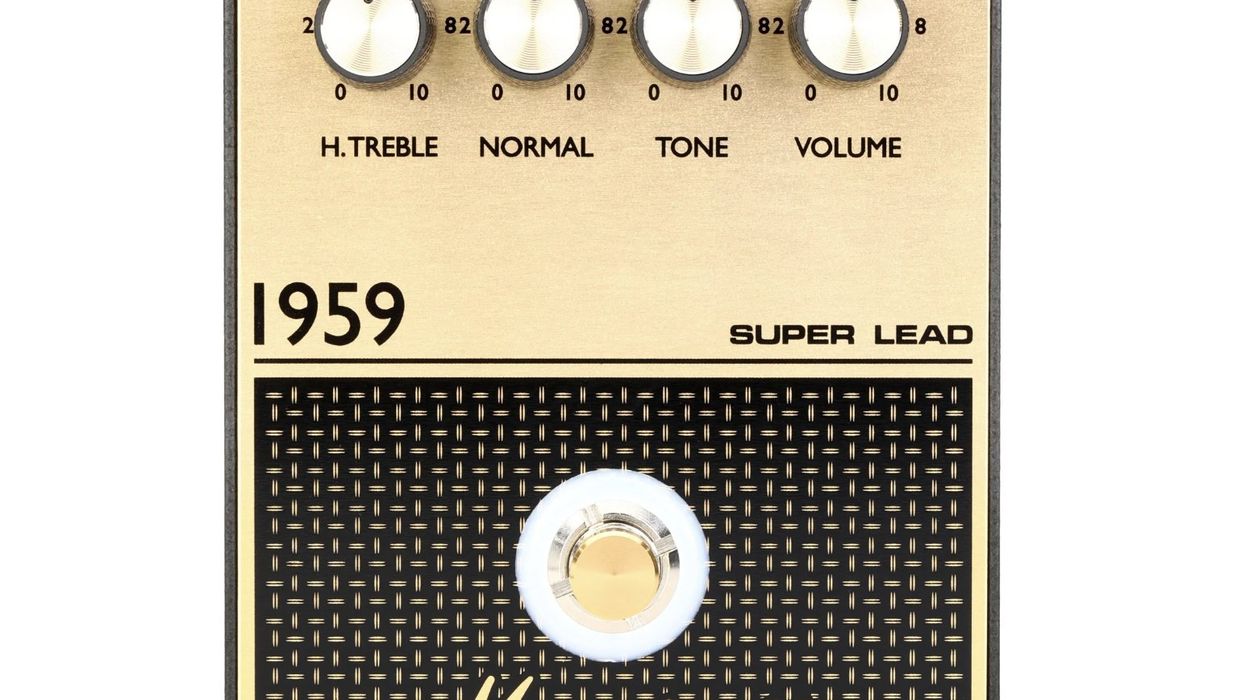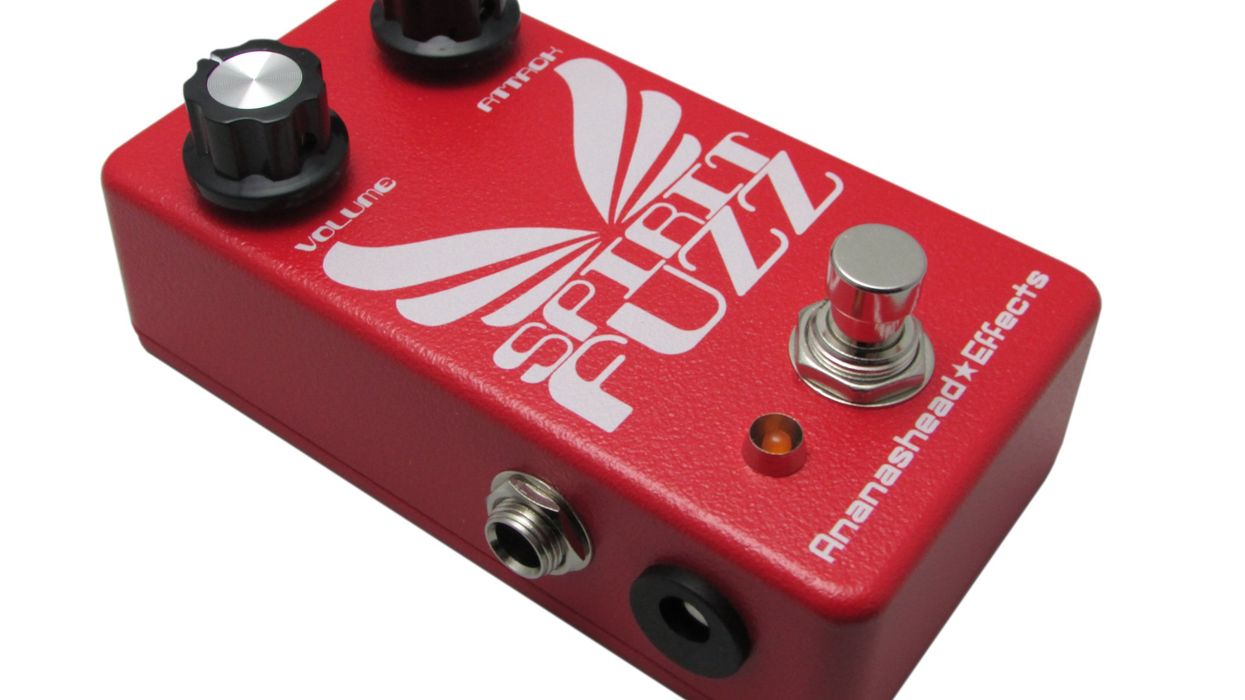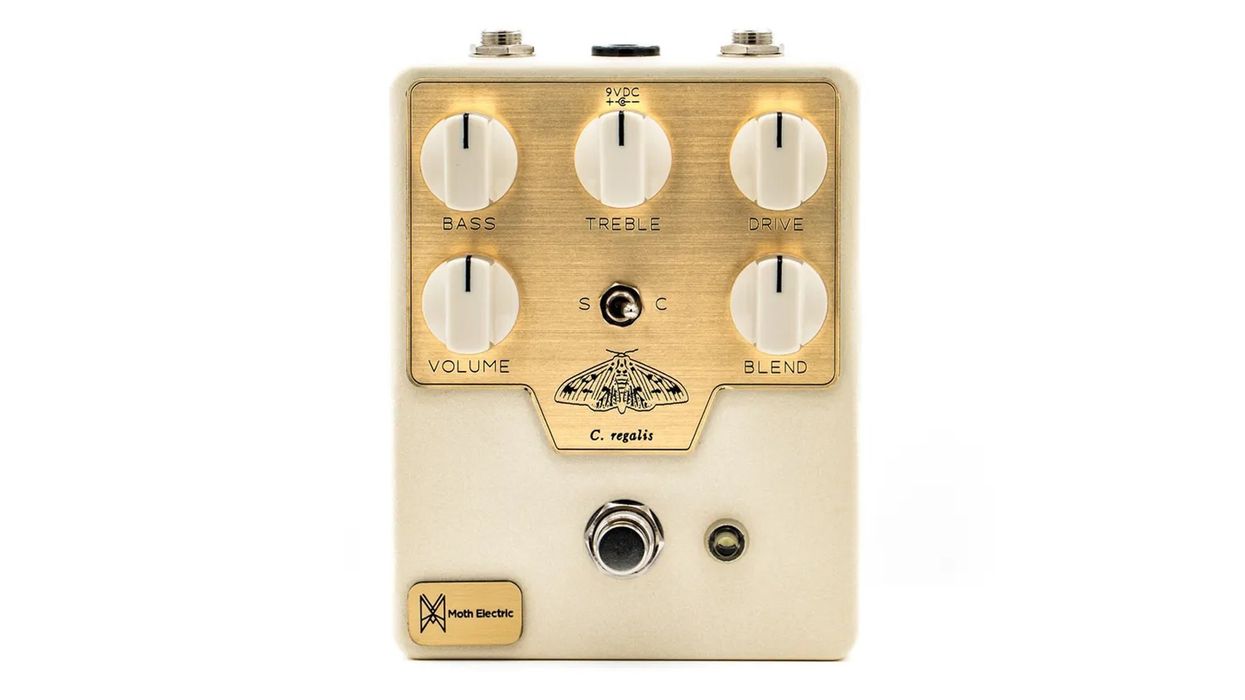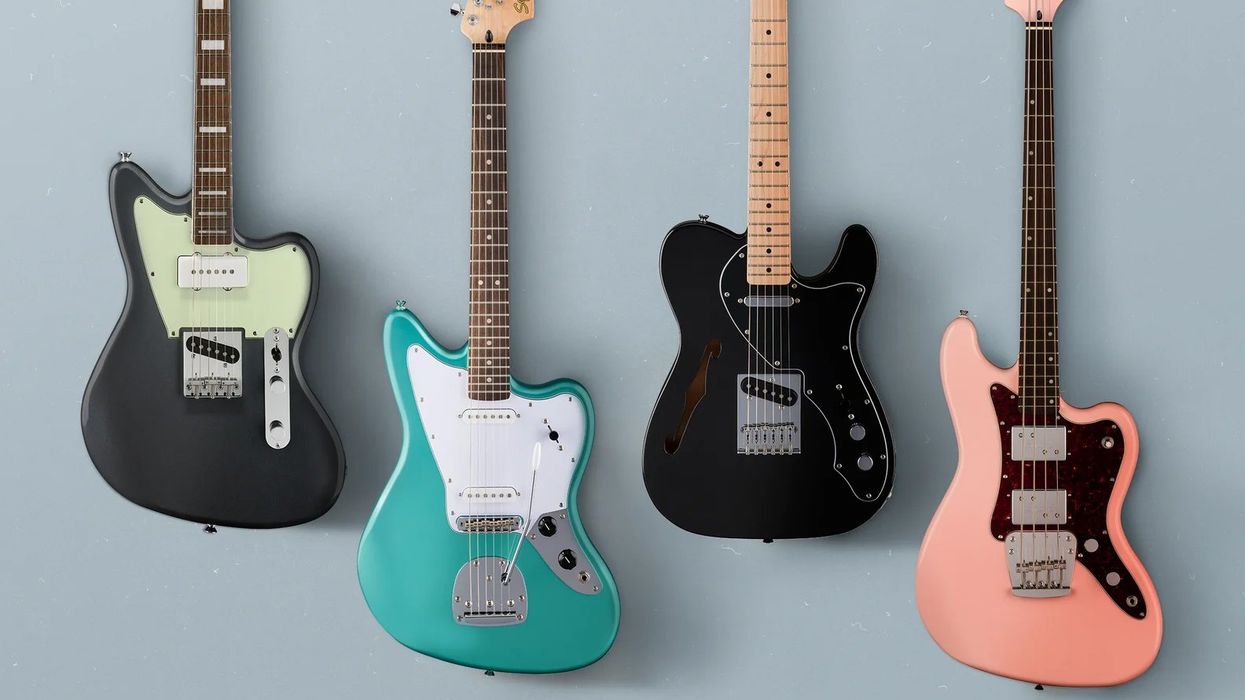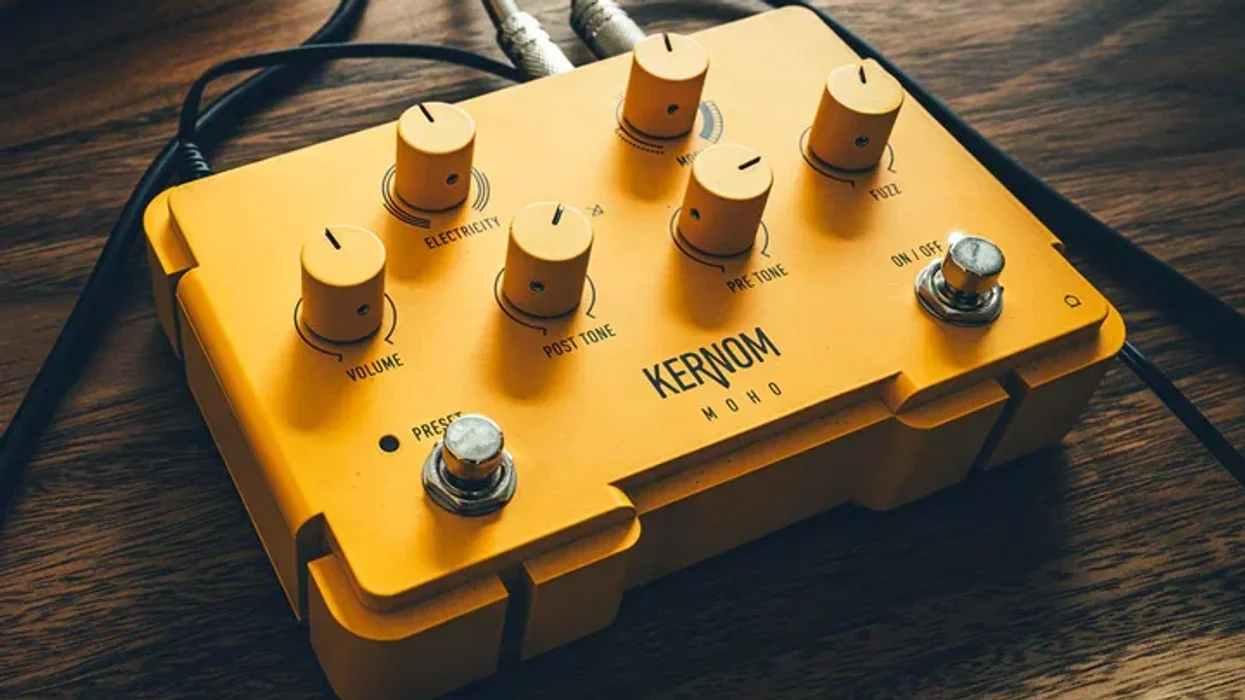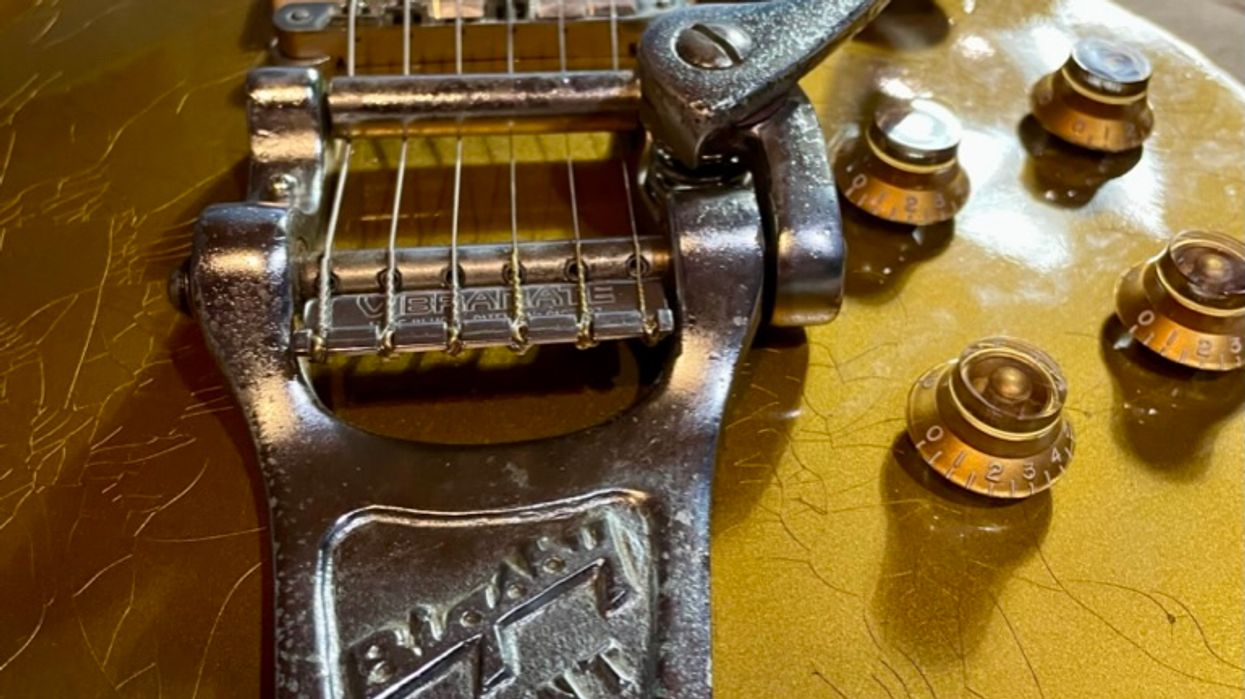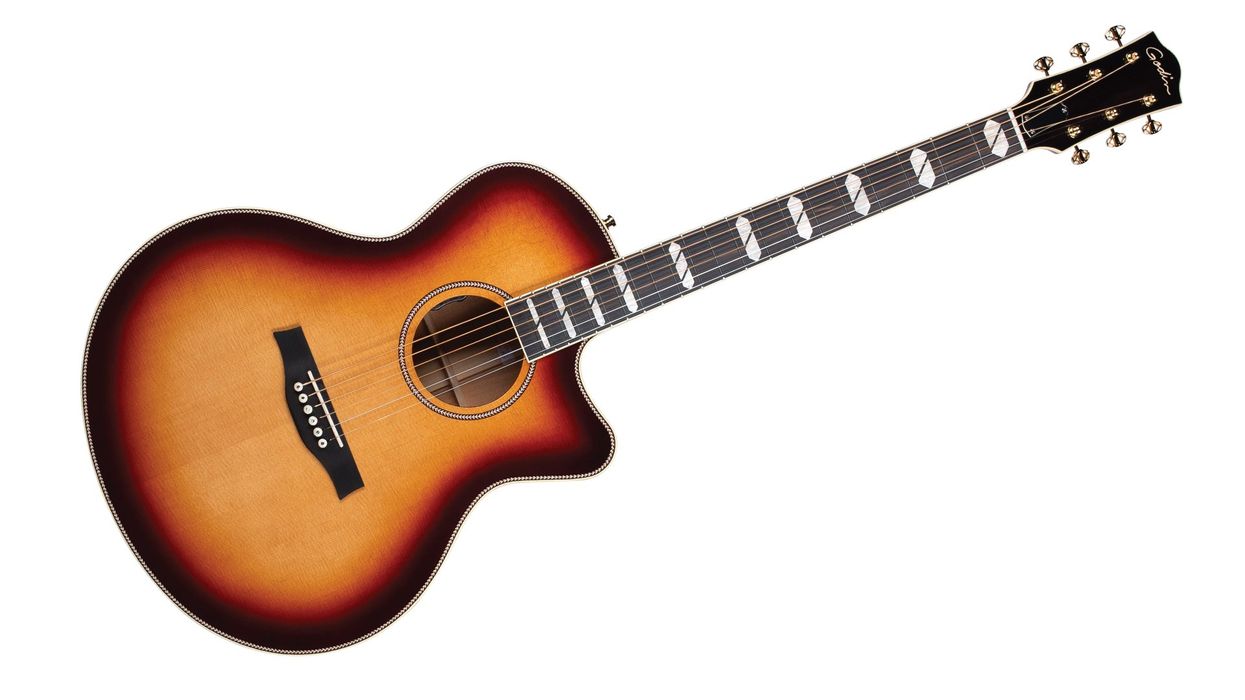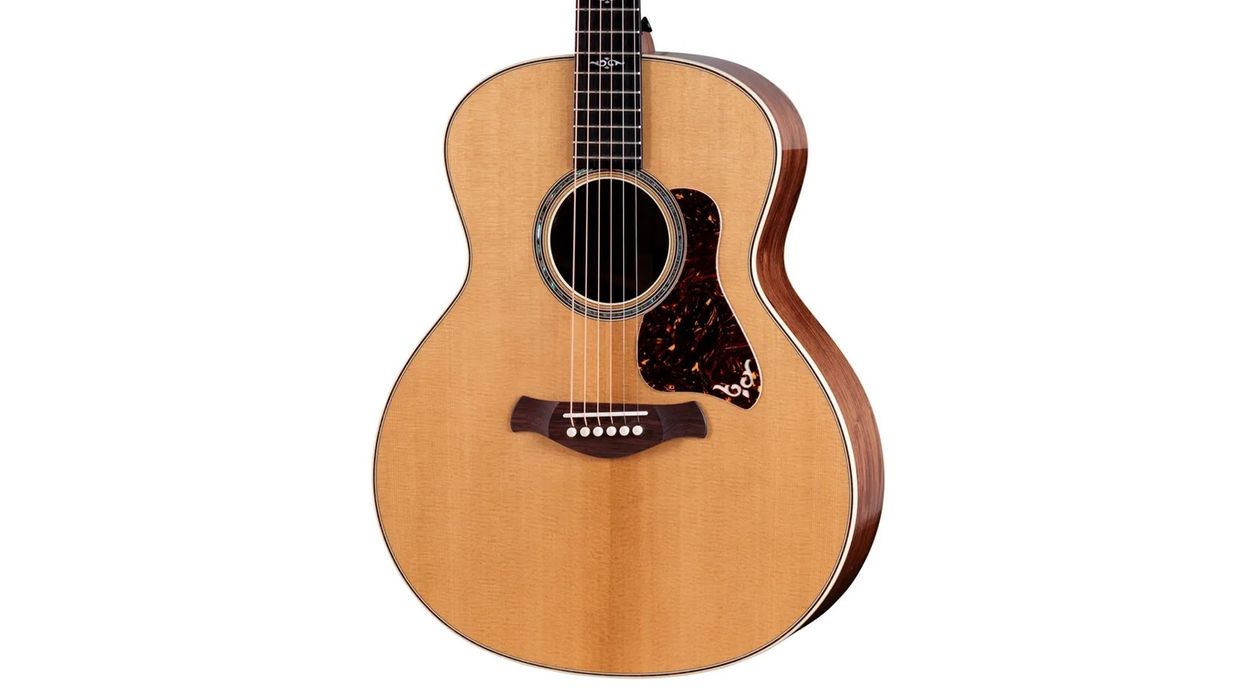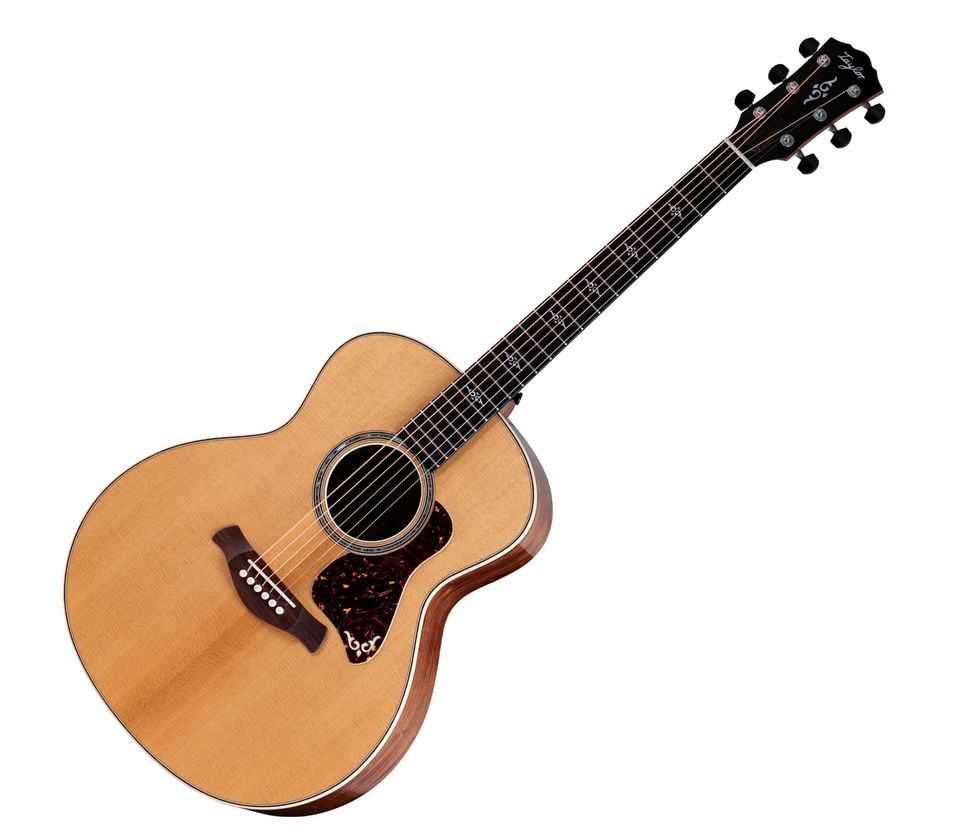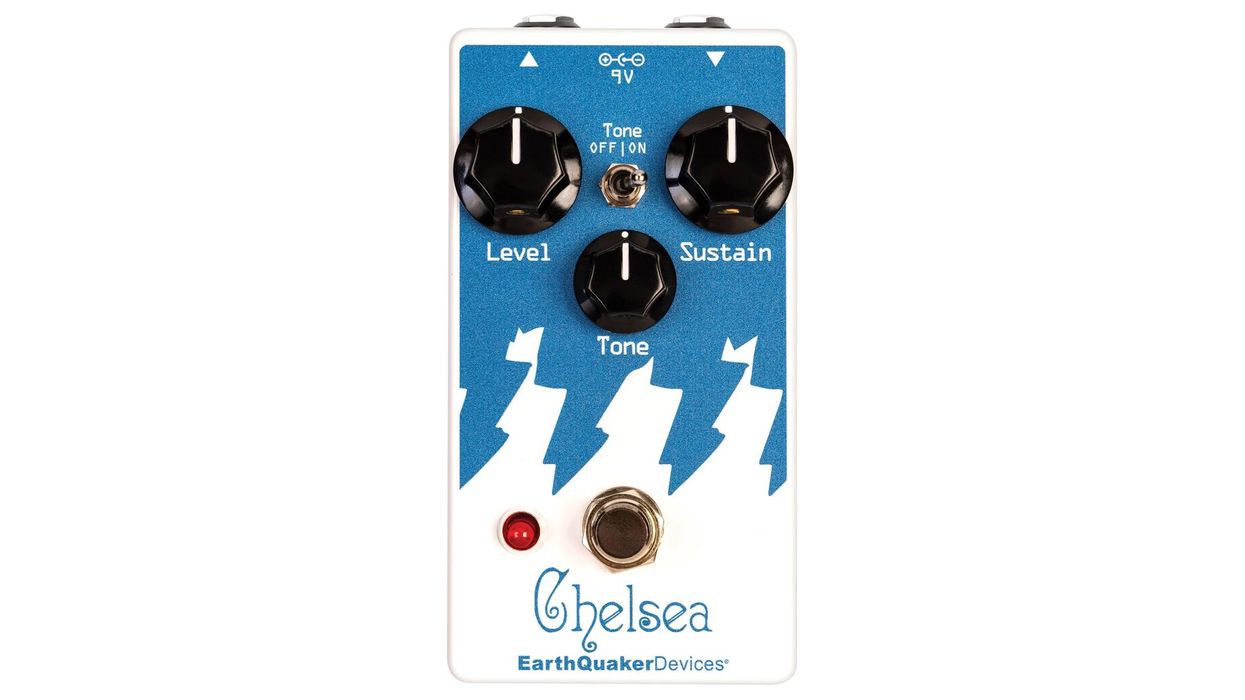Make no mistake about it: Guitar makers are angling for your cash. Economic realities and our society’s consumer philosophy dictate ruthless business strategies. Despite the lofty words of encouragement for your art, it’s really all about the Benjamins. It’s not that this is a totally bad thing. We’ve all got to put food on the table, right? But in a world where the basic layout and operation of the guitar hasn’t significantly changed in five decades, it becomes increasingly difficult to create a “new” instrument.
The side of the road is littered with the flaming wreckage of start-up guitar companies that attempted to buck the trends. The most financially successful are still the originators of the “classic” designs, or those who borrow liberally from their playbooks. Other than that, the industry’s focus is squarely on micro-fashion. Change a pickguard here, a knob there, add a pickup from left field, or resurrect a pawnshop prize—and bingo. You can send me all the hate mail you want, but that’s the name of the game. And there’s good reason for it.
The most astonishing fact today is that the build quality of entry-level instruments has risen to a point where you can take a $200 electric to a professional gig. It might not be a lot of fun, but you could get by and the audience certainly wouldn’t be any the wiser. Think of it this way: In 1954 dollars, that equates to about 25 bucks, while a new Les Paul made from old-growth woods was retailing for just over $200 at the time. What that means is anybody’s guess, but my bet would be that a $25 guitar wouldn’t have cut it back in the day either. Doing the math on their current, relative value will tell you all you need to know.
We live in a time when manufacturing expertise has conditioned us to believe that just about anything we purchase should work pretty well, regardless of the price. But I think our focus is on the wrong part of the equation. When you un-box your new cell phone, you just assume that it will operate pretty much flawlessly for at least a few years. The fact that digital audio from a cell phone sounds worse than the telephone technology from the 1950s doesn’t seem to bother people. Beyond the complaints about dropped calls, we’re happy to have the utility of other functions. Besides, the pace of technology assures us that our gadgets will be outdated before they fail.
Similarly, I enjoy the convenience of storing huge amounts of music on my computer and streaming it wirelessly around my home and shop. You’d think that by now we’d be listening to studio-quality playback everywhere, but the seriously degraded digital-sound files that are passed off on the consumer are a joke.
If it weren’t for the convenience factor, I’d still be playing 15 ips tape or vinyl all day. Oh, you say I should just get FLAC files? Thanks, I was really looking forward to repurchasing my entire library. Such is the “engine of the economy.”
The stupefying range of clothing available via a few taps on the touchscreen is another example of how things have changed. Shoes, boots, pants, shirts, and jackets arrive at your door overnight in any style, any color, and at lower and lower price points. It all looks pretty good at first glance, at least through a few dozen wash cycles. The selling points are style and reasonable cost, which are valid until you factor in the short lifespan of the wares. Working in the favor of the merchants are diminishing attention spans and shorter, fashion-trend life-cycles that render new stuff passé quickly enough that items don’t need to last.
I have some boots and coats that have endured several decades of use because their build quality is so superior to today’s standards. And if I keep them a few more years, they’ll be très chic again. Indeed, part of the attraction to clothing from thrift shops is the awesome craftsmanship and materials of the past. Sound familiar?
When surveying the commercial-instrument landscape, I find the playing field is pretty level out there in guitar-land. Almost any instrument you purchase is going to function, i.e., remain in tune, sound acceptable, and play easily enough to accomplish your mission. The frets may last for a while, and the electronic components will function for a handful of years, especially if you have five other budget guitars to share the load. You can also feel like a member of a big club, one whose membership requirements are set comfortably low enough that anyone can join with minimal cash, risk, or devotion. Congratulations: You’ve collected six mediocre-yet-passable guitars instead of one great one. That’s what passes for an acceptable life-philosophy in this day and age.
Beginning in the late 1960s, professional musicians started to recognize the decline in quality of guitars as they became increasingly commoditized. It took a while for the industry to catch on, but by the time the large manufacturers started catching up and reissuing their glory-day designs, the vintage market had established itself and instituted its own ideals and myths. Today, those aesthetics are mimicked, morphed, and blatantly copied by builders—myself included. For me, it’s a reverence and love of the classics, but it’s good business too. It’s just a matter of which comes first.


